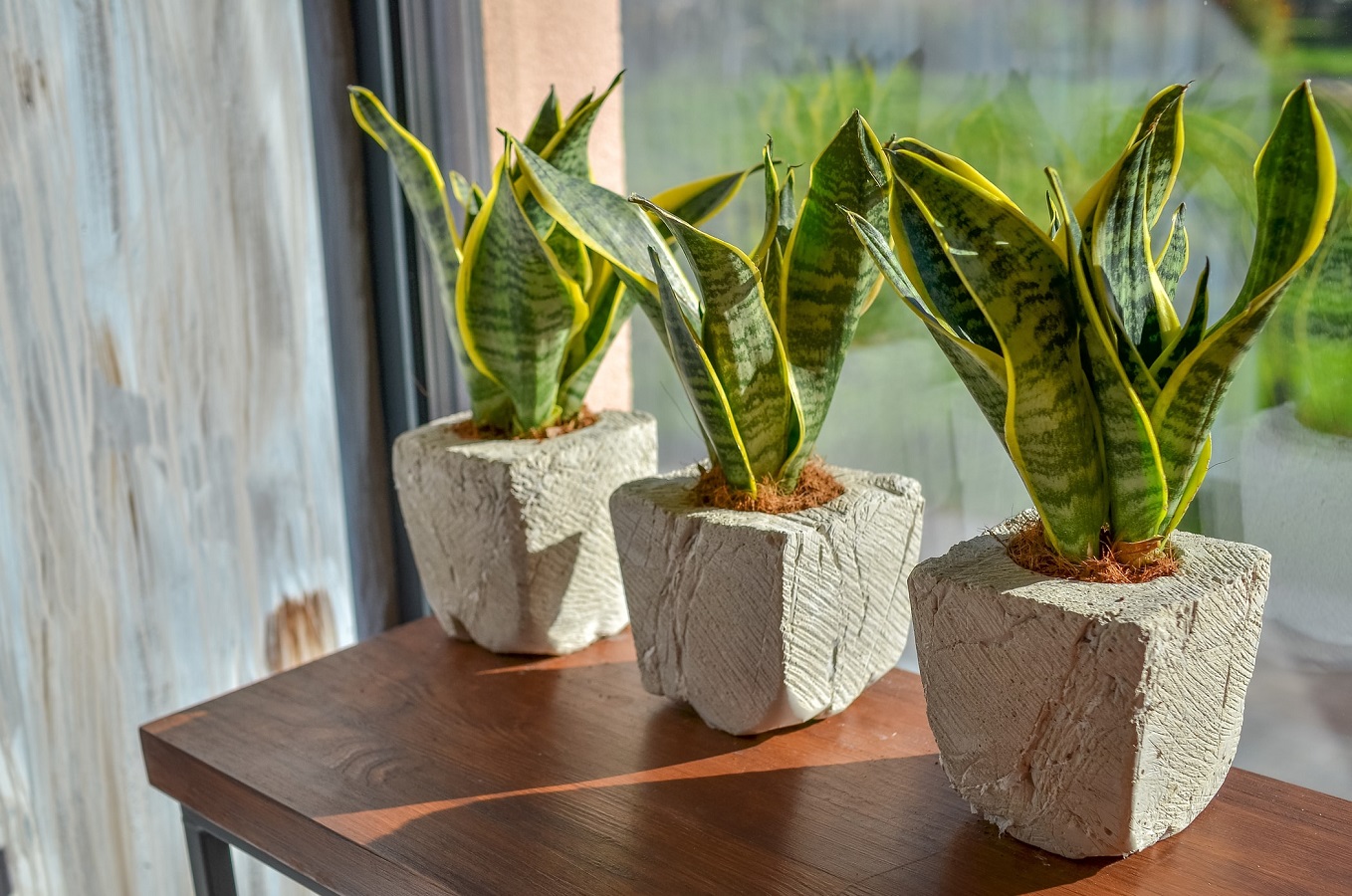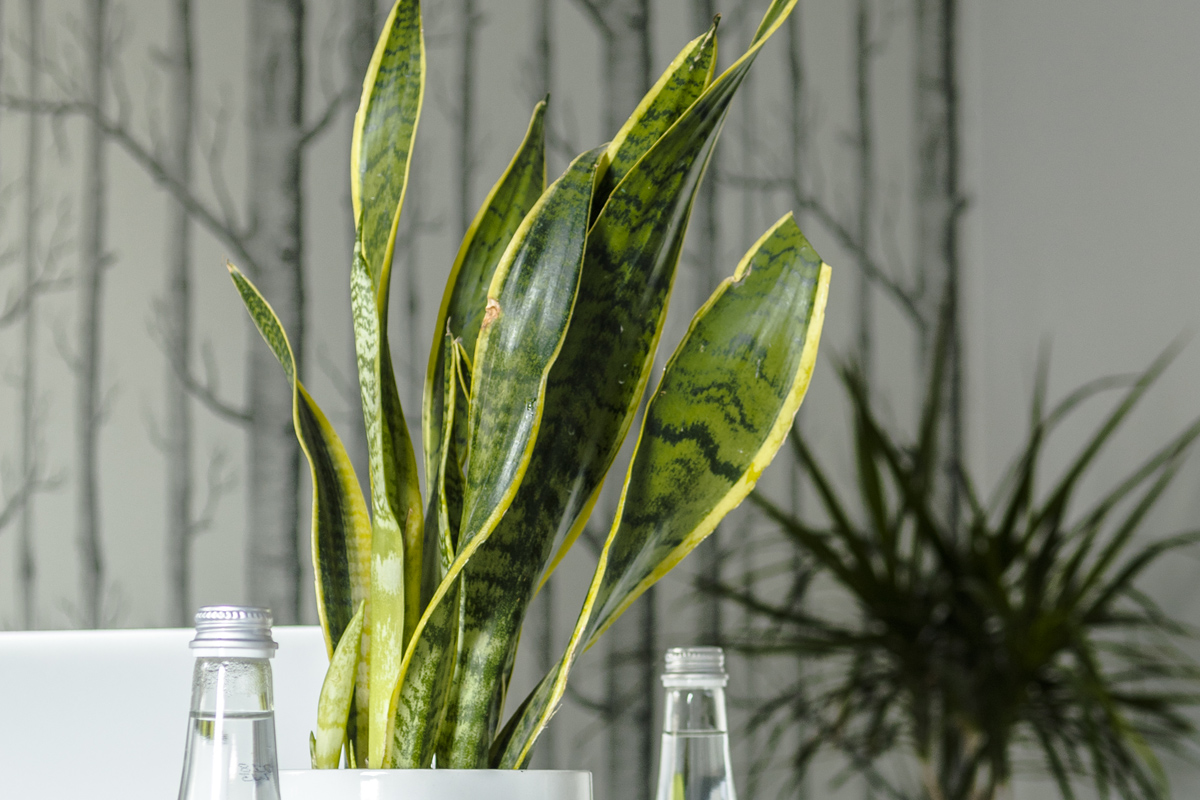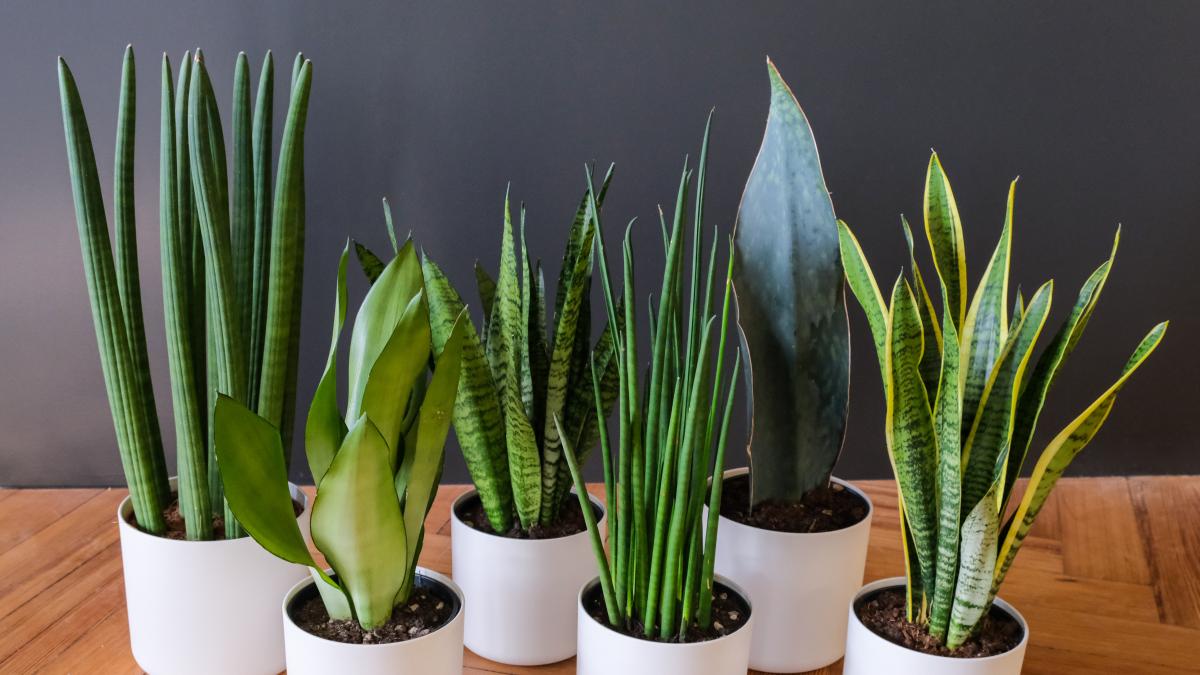Cuidado de la Planta de la Serpiente - Aprenda a Cuidar la Planta de la Sansevieria
La planta serpiente es una planta muy característica que se convierte en un residente cada vez más popular en casas y apartamentos. Es perfecta para todo el mundo, tanto para un experto en flores como para un principiante amante de las plantas. Es una especie que pertenece al grupo de las suculentas, por lo que un riego poco frecuente no la perjudicará. ¿Qué debe saber sobre la Sansevieria? Compruébelo antes de comprar la planta.

¿Qué tipo de planta es la Sansevieria?
La Sansevieria es una planta de interior que tiene unas características hojas decorativas. Es bastante simple de cultivar. Hasta hace poco, era una planta común de oficina, pero empezó a reaparecer en muchos hogares, y cada vez es más popular.
Ten en cuenta que esta planta, también conocida como planta de la serpiente o lengua de la suegra, es muy beneficiosa en el hogar. Purifica el aire de diversas toxinas y contaminantes. Por esta razón, es una perfecta planta de dormitorio.
La Sansevieria tiene muchas variedades. Hay más de 70 tipos de plantas de serpiente, pero sólo tres especies principales se cultivan comúnmente como plantas de interior:
- Sansevieria trifasciata,
- Sansevieria estrella (Sansevieria kirikii),
- Planta serpiente cilíndrica (Sansevieria cylindrica).

Cuidados de la planta serpiente: ¿cuáles son las mejores condiciones para una Sansevieria?
La planta de la serpiente es una opción popular debido a sus distintivas hojas ornamentales, pero no sólo. Mucha gente se decide por ella porque es relativamente fácil de cuidar. A menudo se la llama planta de acero, lo que significa que es resistente a la negligencia. La lengua de suegra es perfecta para los principiantes, ya que puede perdonar los errores y no causa muchos problemas.
¿Cuál es el mejor suelo para una planta de serpiente?
El cuidado de la Sansevieria implica elegir el tipo de suelo adecuado. Una mezcla para suculentas es una buena elección. Preste atención al riego. Las plantas de serpiente pueden soportar un suelo muy seco, por lo que no necesita un riego regular o excesivo.
Tenga en cuenta que la planta pertenece a la familia de las suculentas, lo que significa que acumula agua en sus hojas carnosas.
Planta de la serpiente - temperatura
La Sansevieria no puede sobrevivir a las bajas temperaturas. Si se deja en el exterior en invierno, donde las temperaturas caen por debajo de los 10°C, la planta morirá. La planta de la serpiente necesita una temperatura ambiente de unos 20-24°C (68-72°F). La temperatura más baja que puede soportar es de 17-20°C (62,6-68°F).
Evite dejar la planta en el exterior -en un balcón o patio-, ya que las condiciones climáticas cambiantes podrían perjudicarla.

Planta de la serpiente: ¿qué pasa si la riegas en exceso?
Como la Sansevieria es una suculenta, puede soportar la falta de agua mejor que otras plantas. Todo gracias a sus hojas carnosas, donde la planta almacena agua.
La Sansevieria tiene un sistema de raíces delicado y poco profundo. Si se combina con demasiada agua, podría pudrirse. Es mucho mejor regarla raramente que regar la planta en exceso.

Lengua de serpiente: ¿cuáles son las mejores condiciones de suelo?
La Sansevieria pertenece a las suculentas, por lo que necesita un suelo altamente permeable. Por eso, el fondo del recipiente debe estar recubierto de arena, que debe constituir de ⅓ a ¼ del volumen de la maceta. Rellena la parte restante con tierra, una mezcla de césped, mantillo de hojas, turba y arena.
Comprar una mezcla en una tienda es una solución más fácil, especialmente para los aficionados a las plantas sin experiencia.
¿Se puede trasplantar una Sansevieria?
Si las raíces de la planta serpiente ya no caben en la maceta, planifique el trasplante para la primavera. La Sansevieria prospera en macetas pequeñas, así que trasplántela gradualmente: el nuevo recipiente debe ser un tamaño mayor que el anterior.
Elige un contenedor estable cuando trasplantes tu planta de serpiente. Las macetas de cerámica o arcilla son perfectas para este propósito, y constituyen una base perfecta para la planta.
Las plantas jóvenes deben trasplantarse cada dos años. Las Sansevierias más viejas pueden trasplantarse con menos frecuencia, cada tres años por término medio.

Propagar la planta de la serpiente - ¿es difícil?
La lengua de la suegra no sólo es una planta de aspecto hermoso, sino también fácil de propagar. Usted puede obtener nuevas plantas jóvenes de dos maneras:
- Dividir las plantas adultas es el primer método. Crecen rápidamente y forman muchos tallos nuevos.
- También puedes utilizar hojas como plántulas. Corta una hoja en trozos y ponla en arena para que echen raíces. Luego, plántalas en tierra en un nuevo recipiente.
¿Es la planta de la serpiente propensa a las enfermedades?
La Sansevieria es una planta muy duradera. Si la cuidas bien, crecerá bien durante todo el año. Es poco probable que la planta enferme; el mayor problema al que puede enfrentarse es el exceso de riego.
Asegúrate de que la temperatura es la adecuada, sobre todo en invierno. Las temperaturas demasiado bajas pueden provocar enfermedades; puedes reconocerlas en las hojas.

📍 ¿A qué velocidad crecen las plantas de serpiente?
La planta serpiente es una especie de crecimiento relativamente rápido. Al principio, puedes ponerla en el alféizar de una ventana, ya que no le importa el sol. Pero pronto, sus hojas serán demasiado largas y tendrás que tenerla en el suelo.
📍 ¿Cómo cuidar una planta serpiente?
La lengua de suegra no es una planta complicada de cultivar. Recuerde regar una vez cada o cada dos semanas en verano. En invierno, se debe regar con menos frecuencia, incluso una vez cada 21 días. Abone la planta con un líquido fertilizante durante los meses cálidos.
📍 ¿Cuál es el suelo adecuado para las Sansevierias?
La Sansevieria, comúnmente conocida como planta serpiente, necesita un suelo fértil, rico en humus y permeable. Si te decides por las mezclas compradas en la tienda, elige la diseñada para suculentas y cactus. La planta de lengua de serpiente no tolera la tierra excesivamente húmeda: riégala sólo cuando esté seca.
📍 ¿Qué tipo de recipiente es el mejor para una planta de serpiente?
La Sansevieria debe plantarse en un recipiente pesado y estable. Esto se debe principalmente a la longitud de las hojas. Además, las paredes del recipiente deben ser lo suficientemente gruesas para que las raíces en crecimiento no las rompan..
Artículos destacados




